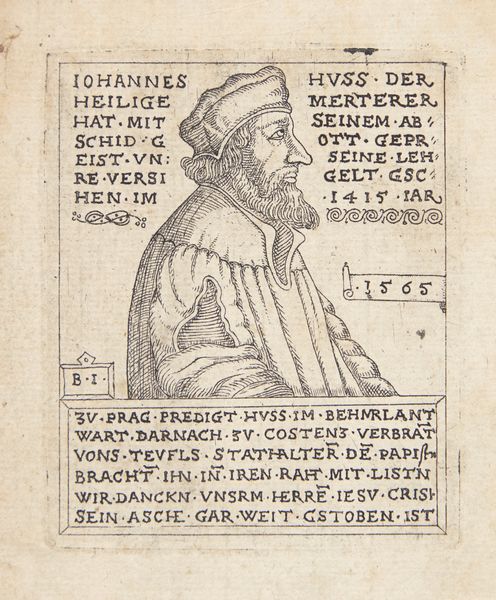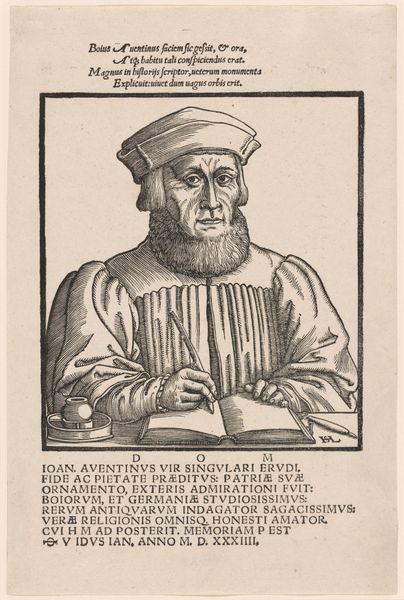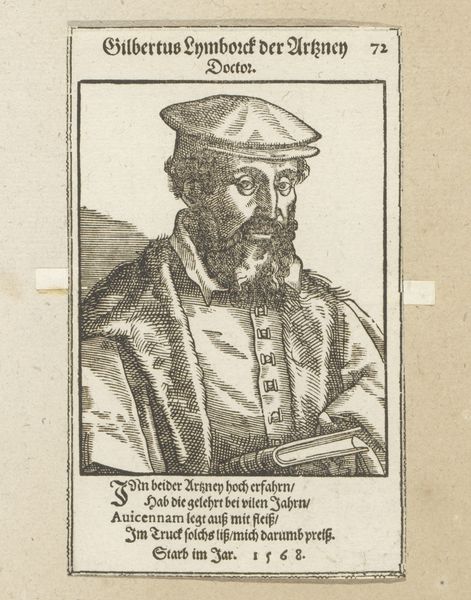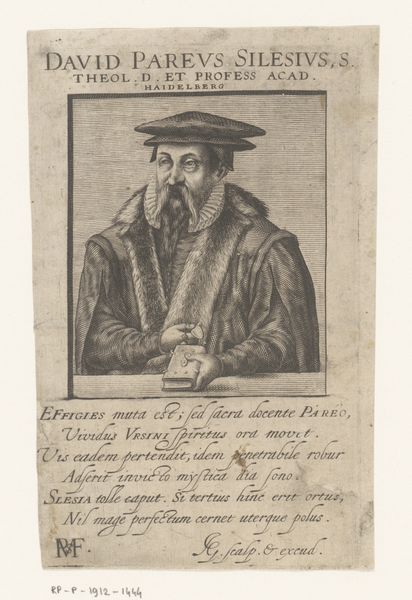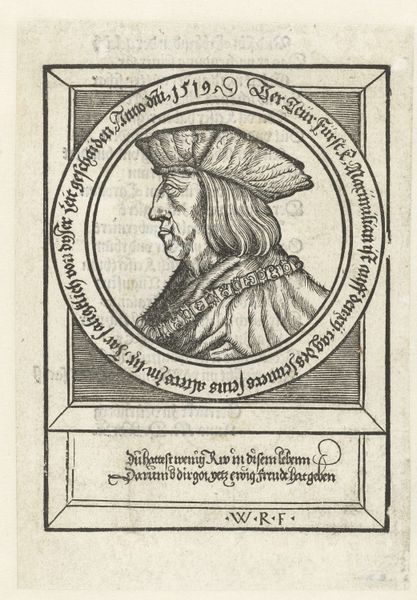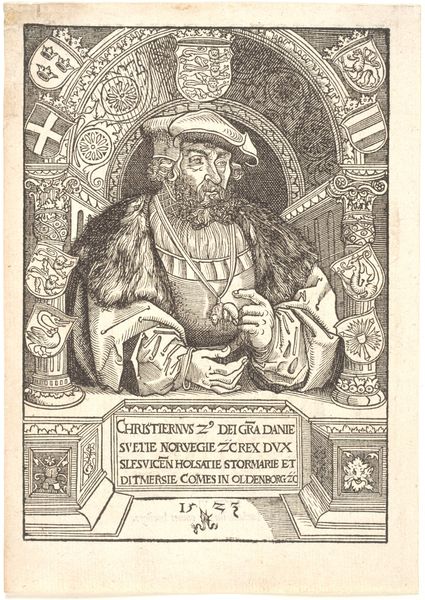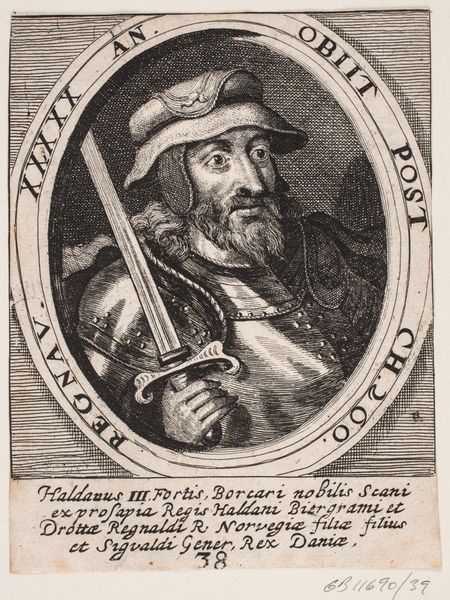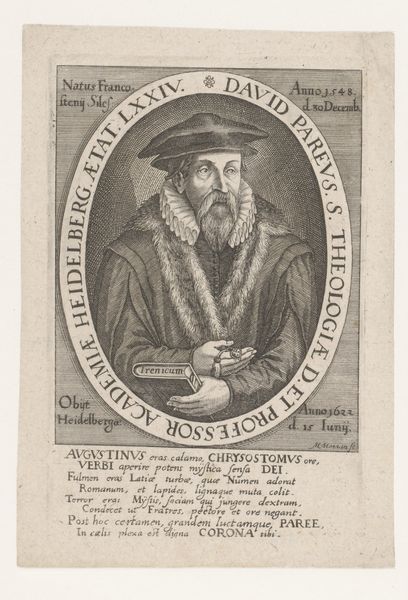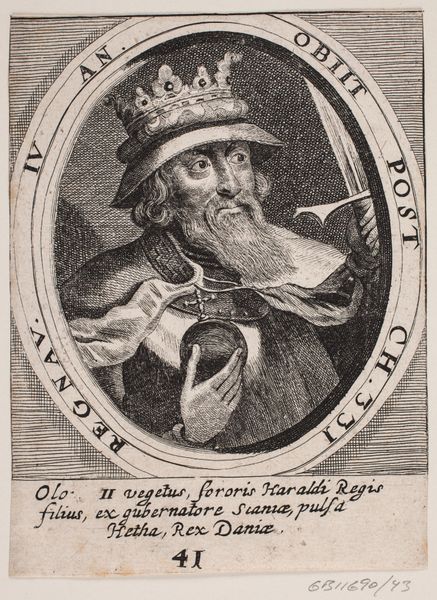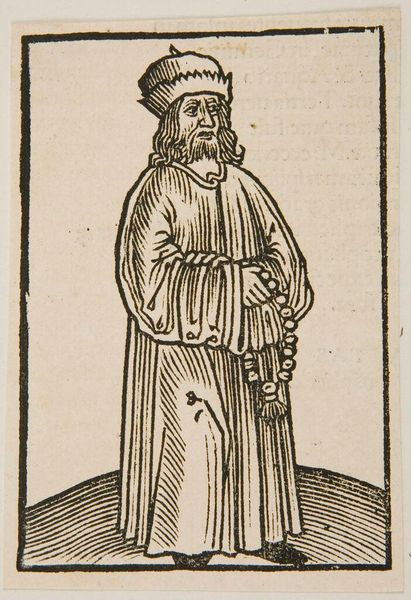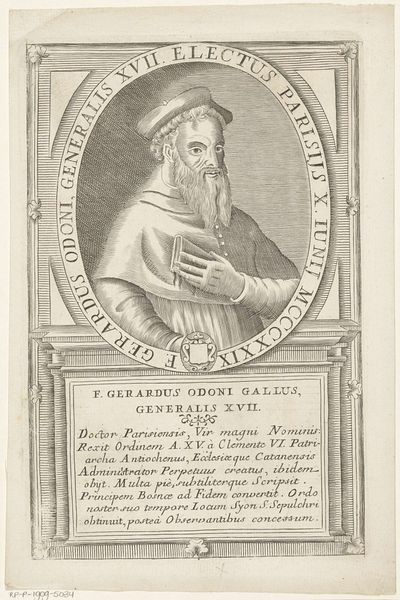
drawing, print, etching, engraving
#
portrait
#
drawing
# print
#
etching
#
figuration
#
northern-renaissance
#
engraving
Dimensions: 87 mm (height) x 70 mm (width) (plademål)
This 16th-century print by Balthasar Jenichen depicts Andreas Osiander, a prominent theologian during the Reformation. Osiander is presented in a simple, unadorned style, characteristic of the Reformation's emphasis on scripture and personal faith. Note the sitter’s attire: a modest cap and coat. Such garments were meant to symbolize humility and a departure from the lavish vestments of the Catholic clergy. This visual rejection of opulence mirrors the reformers' call for a return to the core teachings of the Gospel. Consider how this motif of simplicity recurs throughout history, even in early Christian art where figures like Saint Francis of Assisi appear in humble robes, rejecting worldly goods. The enduring power of such images lies in their ability to stir deep-seated emotions and unconscious associations. They represent a longing for purity and authenticity, a cultural memory passed down through generations. The cyclical return of this motif across time shows the emotional resonance with viewers, reminding us of the perpetual human quest for spiritual truth.
Comments
No comments
Be the first to comment and join the conversation on the ultimate creative platform.
